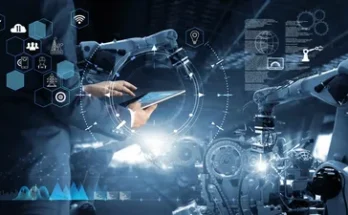The main focus of climate change has been to promote R&D investment in clean technology and to highlight the role of public and private organizations. The story from COP26 in Glasgow is clearly different. One of the key themes from this conference is the urgency needed so that we can just go beyond investing in research and focus on the rapid spread of technological innovations that address the causes and effects of climate change.
Exporting Exceeding Experimental Research Investment As A Critical Factor To Deal With Climate Change
Ideas that have proven its effectiveness in research labs, startups and innovation centers should be quickly transformed into widely available and widely accepted products and services. These proven ideas need to be addressed in two different contexts and times. In the short term, the focus is on reducing the negative impacts of the environment. This includes maximizing the efficiency of data centers and automated industry resources and avoiding or significantly reducing the impact of industrial hazards. New long-term innovations are about new products, products and systems designed to be on or near the net for the impact of carbon from day one – for example, the EV ecosystem and raw hydrogen.
Major measurement efforts of all strategies will vary in strategies and resources. Measurement software is different than building a large renewable energy plant, and this is different than convincing consumers to pay a premium for raw materials. The stage of vision that once made us despair seems simple compared to the journey we are now under when “murder – in the real world – is everything.”
Short-Term and Long Frames for New Climate Change Designs
So far, much of the focus and attention of the media has been on intellectual property and “images of the moon” spanning decades. Examples of this include government and the private sector – President Joe Biden’s goal of a zero-productive economy by 2050, EU data center operators signing a climate-neutral climate campaign by 2030 and US and European car manufacturers committed to 100 % EV sales targeted between 2030 and 2040.
MUCH FOR YOU
Google Issues Warning to 2 Million Chrome Users
Forget the MacBook Pro, Apple Has Bigger Apps
Google Pixel 6, Nest & Pixel Buds Discounts At Limited Time Sales
While these long-term plans are important, they need to be aligned with innovative efforts that work quickly and effectively on a scale. Our current climate is so bad that we do not want a consistent approach to innovating today.
The Functional Transformation of the Natural Effect Today
We are already seeing changes in operating industries such as the oil and gas and construction industries that have a positive impact on the environment today.
Preventing accidents in the oil and gas industry. We do not usually think first of the oil and gas companies in terms of environmental management. Yet these companies are well positioned to make a significant contribution today by improving their sensitivity and responsiveness to the evolution of complex digital filters and their pipelines. A well-designed network of sensors, cameras, and AI spread across the edges can enable them to detect confusing issues such as leaks or pre-leak conditions and then transfer that information to the control room for immediate action.
• Managing building energy savings. The construction industry accounts for a large proportion of electricity consumption – about 40 percent of all US energy consumption. . 5G networks, IoT sensors and AI can enable the next generation of intelligent “intelligent architecture”. New software systems can constantly monitor and detect changes in the environment and intelligently adjust the corresponding requirements for lighting, air circulation, heating and cooling which in turn improves energy efficiency.
Enhancing the Posting of Innovation Technologies for Environmental Impact Today
The success of innovative innovation and the widespread distribution of technologies that address operational change are linked to two conditions: an established ecosystem of permissive technology and faster approaches to software development and implementation.
• Available ecosystem to enable technology. Large 5G networks are a necessary infrastructure for rapid distribution and smart deployment in complex digital environments. MECs (multiaccess or mobile edge computing) enable you to process anywhere. Edge-based AI draws automatic decisions where appropriate and enables the most powerful forms of human-required machine interaction in unexpected and ever-changing situations.
• Accelerated ways to develop, supply and measure software technology. A new generation of clever, real-time programs needed to address climate change issues must be built to hear, analyze and inform actions in a complex digital environment. Accelerating the development of these software programs needs to be defined by the days or weeks, not the months or years required by even the most experienced teams to build on common tools and modern structures.



